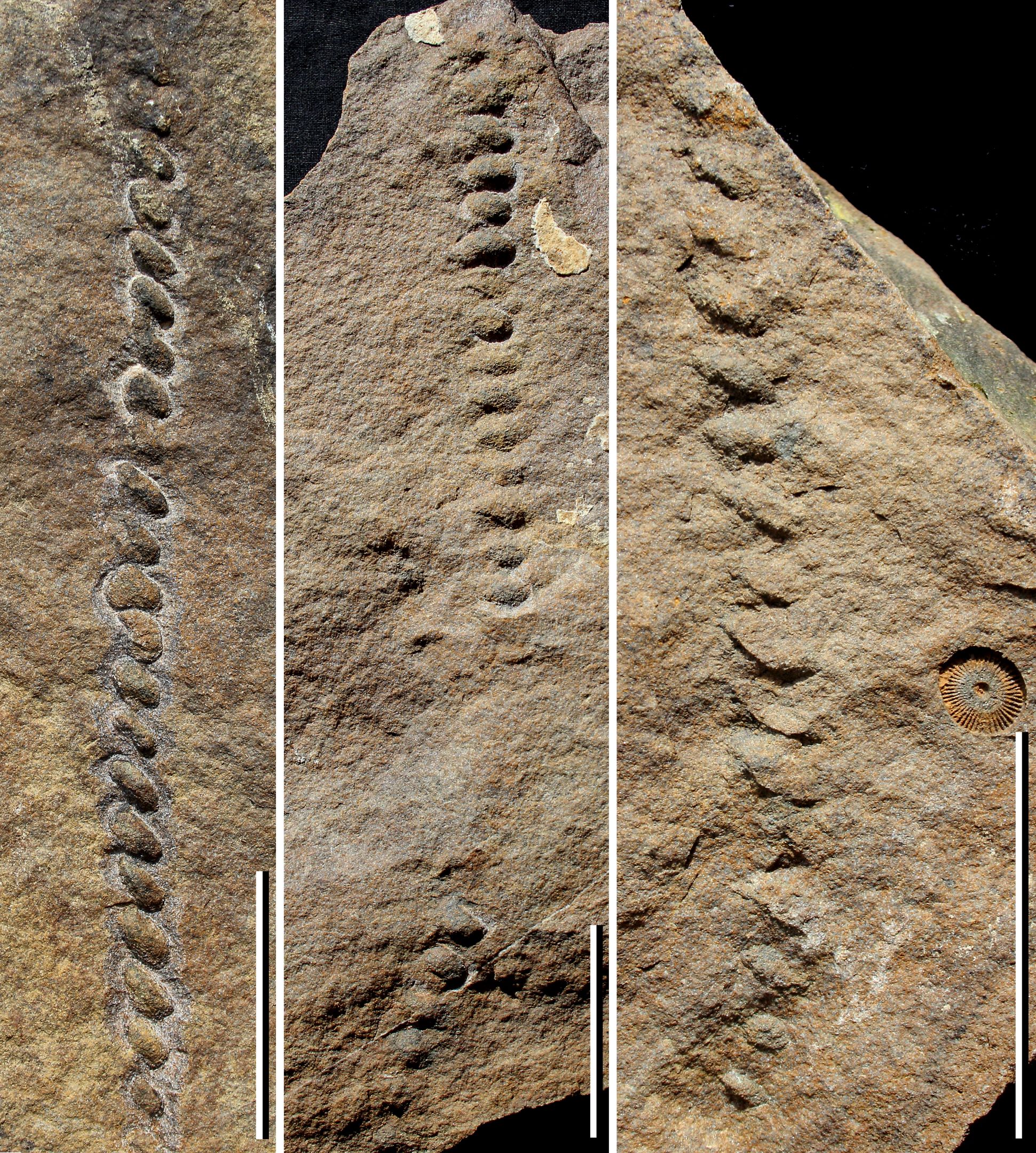Helicodromites Berger, 1957
DESCRIPTION: Horizontally to slightly oblique oriented helical burrow that forms a spiral around a straight, hypothetical axis in the horizontal plane to form a corkscrew pattern. Successive whorls are closely spaced and almost touch each other in some spec Spirals are on average 11 mm wide (from 9 to 16 mm) and up to almost 30 cm long but is limited by the outcrop. Infill is structureless. Preserved in full relief.
BEHAVIOR(S): Thought to represent domichnia (dwelling), fodinichnia (deposit feeding), or pasichnia (grazing)
ENVIRONMENTAL SETTINGS: Shallow- to deep-marine envrironments
POSSIBLE TRACEMAKERS: Capitellid polychaetes, enteropneusts, crustaceans
GEOLOGIC RANGE: Silurian–recent
ADDITIONAL REFERENCES: Hantzschel 1975, Gingras et al. 1999, Poschmann et al. 2015
REMARKS: The Treatise lists the earliest occurrence as late Cambrian? in age. They appear similar in form but differ in morphology from Belorhaphe, Helicolithus, and Megagyrolithes. Like other marine helical burrows, Helicodromites may be part of a larger burrow system, forming a compound burrow system of several behaviors. These burrows are very abundant in Cretaceous marine deposits.
